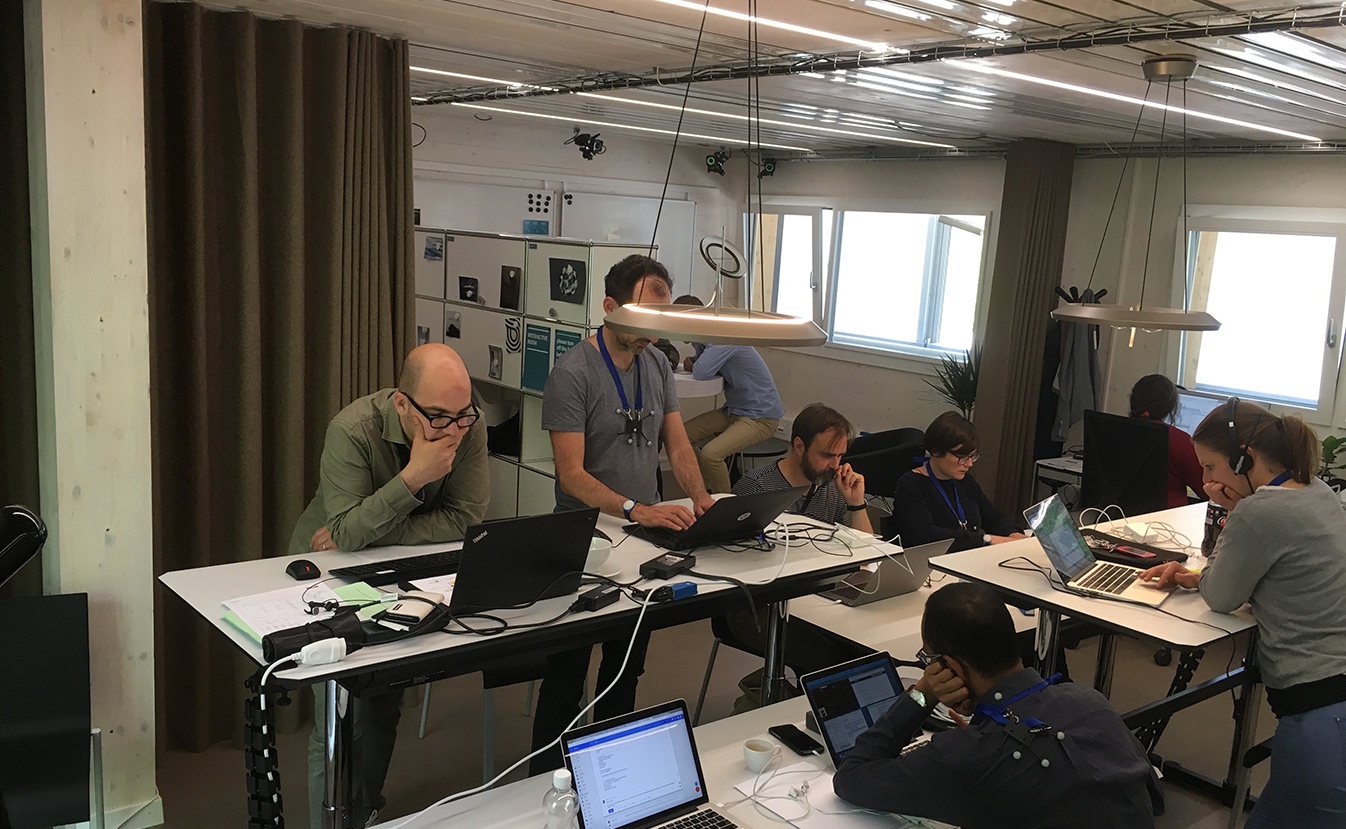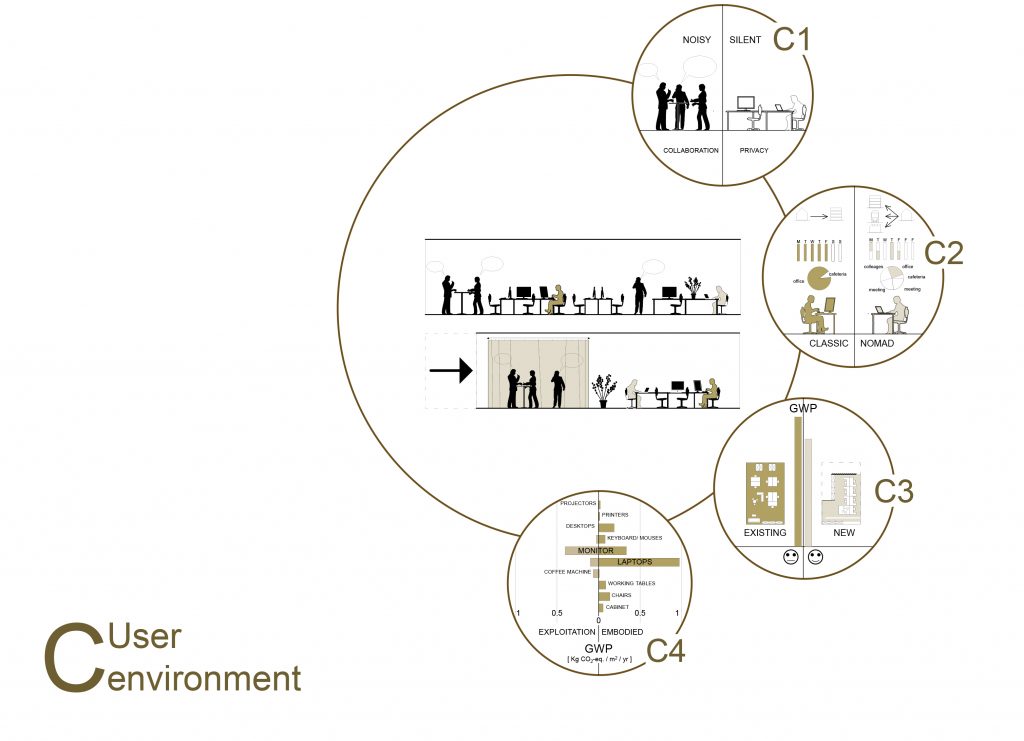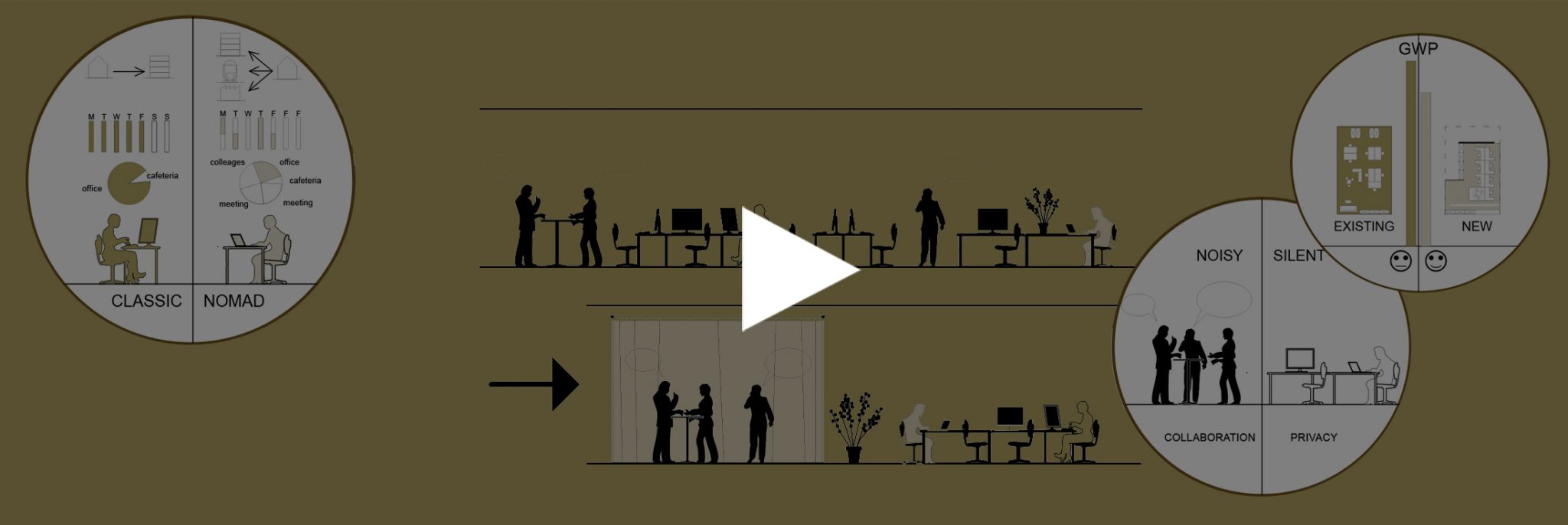User Environment Strategies

To reduce energy consumption and CO2 emissions, the aim is to obtain a stronger occupation density, while satisfying the users’ needs, through partial desk sharing and by offering more common spaces. Through an increased intensity of use, the building’s energy investment is thus more profitable.
The aim of the user environment strategy is to integrate and balance user knowledge and the Building2050 objectives through a prototype that offers a variety of workspaces (04-C1). In order to decrease GHG emissions, the experimentation intends to enhance its usage intensity and the flexibility of its spaces (04-C3). However, existing methodologies to study space use are time consuming and limited to qualitative methods, including observations, surveys and interviews.
An appropriate balance between energy consumption and user requirements needs to be found based on an understanding of the interrelations between user behaviours (04-C2), building component design and the environmental impacts of the building. In spite of the clear evidence of the use of a large number of furniture and appliances in the daily life, none of the previous works have considered them in the boundary of building LCA studies. In this experimentation, furniture and appliances were included in the scope of the performance assessment.
Adopted approach for the SLB research program on user environment
In order to specify the building functionalities and surfaces (03-A), quantitative and qualitative social studies have been performed (Maeder et al., 2015).
First, a top-down study identified qualitative values relative to the project by exploring the documentary production and the positions of the committees involved. The top-down approach helped establish a conceptual base and build a consensus regarding what were identified as the four key principles of the smart living lab: cooperation, innovation, wellness and ecology.
Second, while many works on management and ergonomics explore the links between the workplace and productivity, these studies are far fewer in the academic world, where the notion of productivity is harder to define. A bottom-up approach, conducted in parallel, provided a quantitative analysis of the employees’ expectations, who will be those first affected by the building in terms of layout and work environment. An online survey was set up, and the questionnaire was returned by 1,598 participants (03-D1; 03-D2; 03-C). This material led to a better understanding of future users’ behaviour and comfort wishes.
Partners
LASUR, EPFL
Human-IST, University of Fribourg
Atelier Oï, La Neuveville
Funding
State of Fribourg – Switzerland
Please note that the publication lists from Infoscience integrated into the EPFL website, lab or people pages are frozen following the launch of the new version of platform. The owners of these pages are invited to recreate their publication list from Infoscience. For any assistance, please consult the Infoscience help or contact support.
Research at the service of building design
Exploring / Research-driven Building Design. Towards 2050; Zürich: Park Books, 2019. p. 276.Smart Living Building Research Program – Executive Summary
2017

